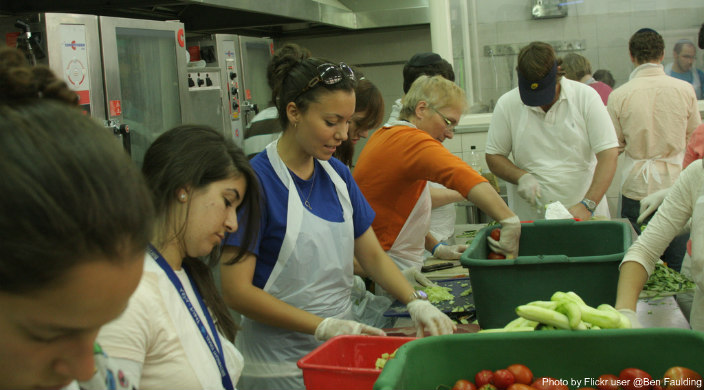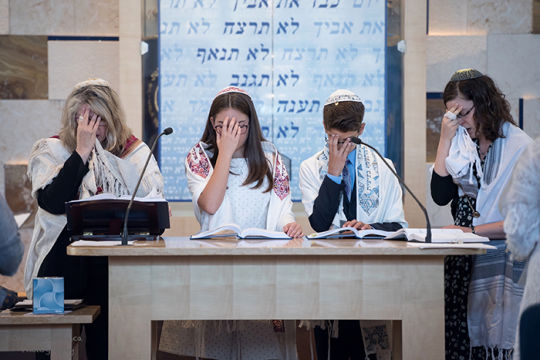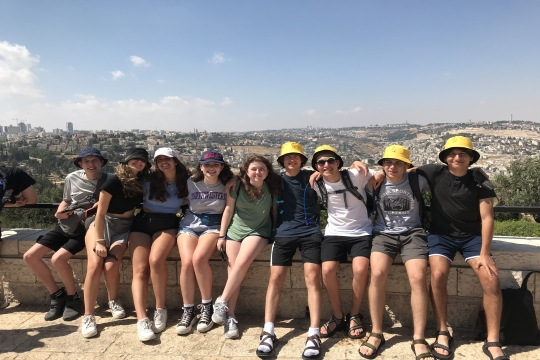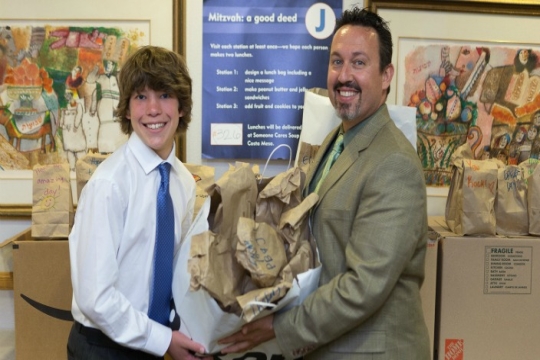
Reform Congregation Keneseth Israel in Elkins Park, PA, was among the first 13 congregations selected from throughout North America to learn, question, share resources, and develop new and innovative models as part of the URJ’s B’nai Mitzvah Revolution. We began our journey in this pilot cohort by asking our eighth grade families one question: What could we have done to better prepare your family for your child’s bar or bat mitzvah?
The answers revealed a trend that helped us experiment and engage in a process with other congregations in the cohort that ultimately led us to a new initiative in our own synagogue. Although we earned high marks for students’ ability to lead the Shabbat worship service, deliver a d’var Torah, and chant Torah and haftarah, we also heard that families struggled to complete the requisite mitzvah project that is part of b’nai mitzvah preparation in our congregation.
Specifically, parents told us they usually had to nag their children to move the projects along and wondered why the kids had to work alone. As a result, the projects generally happened close to the bar or bat mitzvah, creating stress and adding one more thing for students to check off their “to do” lists.
Even as parents and students inherently understand mitzvot as an important part of being a responsible Jewish adult, they did not feel that the projects they were choosing had anything to do with being Jewish, Judaism itself, or the social action work already underway in our congregation.
Does any of this sound familiar?
With this information in hand, our B’nai Mitzvah Revolution team went to work to launch Mitzvoteinu (Our Mitzvot), a sixth-grade, mitzvah project training program, that will:
- Be offered in the fall of sixth grade, allowing students ample time to experience a successful program before they chose an individual mitzvah project in the middle of sixth grade year, which is a full year before most b’nai mitzvah services
- Offer numerous project options – that already exist in the congregation – for students to do together, and include at least one “Mitzvah Mentor,” a congregant who will lead the project’s volunteers.
- Include pre-project study sessions that address the Jewish values of each project and opportunities for reflection after the project so students can synthesize what they learned.
The results were spectacular.
Whether planting and harvesting vegetables in our mitzvah garden, turning the produce into soup for homebound senior citizens, organizing a dinner for Holocaust survivors to share their stories, making concussion survival kits for students with brain injuries, or ushering at Shabbat services, sixth graders and their parents participated in mitzvah projects in seven different areas of congregational life. What’s more, they are making a true impact in their own community and adding energy and enthusiasm to the synagogue’s social action commitments.
Thanks to the pilot cohort of the URJ’s B’nai Mitzvah Revolution, we created hands-on ways to model what it means to put Jewish values into action. Our pre-b’nai mitzvah students not only gained valuable knowledge about how to complete their own projects, but also, and perhaps most importantly, established a foundation for lifelong social justice work that is grounded in Jewish values and connected to the Jewish community. Many students opted to continue to participate in their Mitzvoteinu projects instead of an individual mitzvah project.
What’s more, as the result of a presentation I made at last year’s URJ Biennial convention during which I shared program materials and the lessons we learned with clergy and lay leaders from 20 congregations, we extended the reach of Mitzvoteinu and our efforts to create it. In my new role as director of education at Main Line Reform Temple in Wynnewood, PA, I’ll launch Mitzvoteinu here, too. Of course the projects will be different, but our sixth graders and their parents will have opportunities to help resettle refugees, make salad for a local soup kitchen, organize an emergency food warehouse, and deliver breakfast bags to homebound senior citizens. I am excited to see the effect Mitzvoteinu will have on students, their families, and our congregation.”
These guidelines can help you start Mitzvoteinu in your congregation:
- Ask your clergy or social action chairs about specific projects that already are supported by the congregation. The lay leaders likely will be eager to join forces with the religious school, especially if they have a leadership role.
- Getting teachers and families on board is easy; parents love to participate together with their kids, especially when projects reinforce living Jewish values.
- If your religious school classes are small, you can modify Mitzvoteinu by selecting one project for the class to participate in together.
No matter the format, Mitzvoteinu is a win-win for all. It builds Jewish identity, promotes family engagement in synagogue life, and supports the important work of congregations to enrich and enhance their communities and our world.
To learn more about this and other BMR Innovations, visit the URJ B’nai Mitzvah Revolution interactive Innovations Guide.
Have something to say about this post? Join the conversation in The Tent, the social network for congregational leaders of the Reform Movement. You can also tweet us or tell us how you feel on Facebook.
Related Posts

Becoming Bet Mitzvah

A $3,250 Gift for Your B’nei Mitzvah Teens
